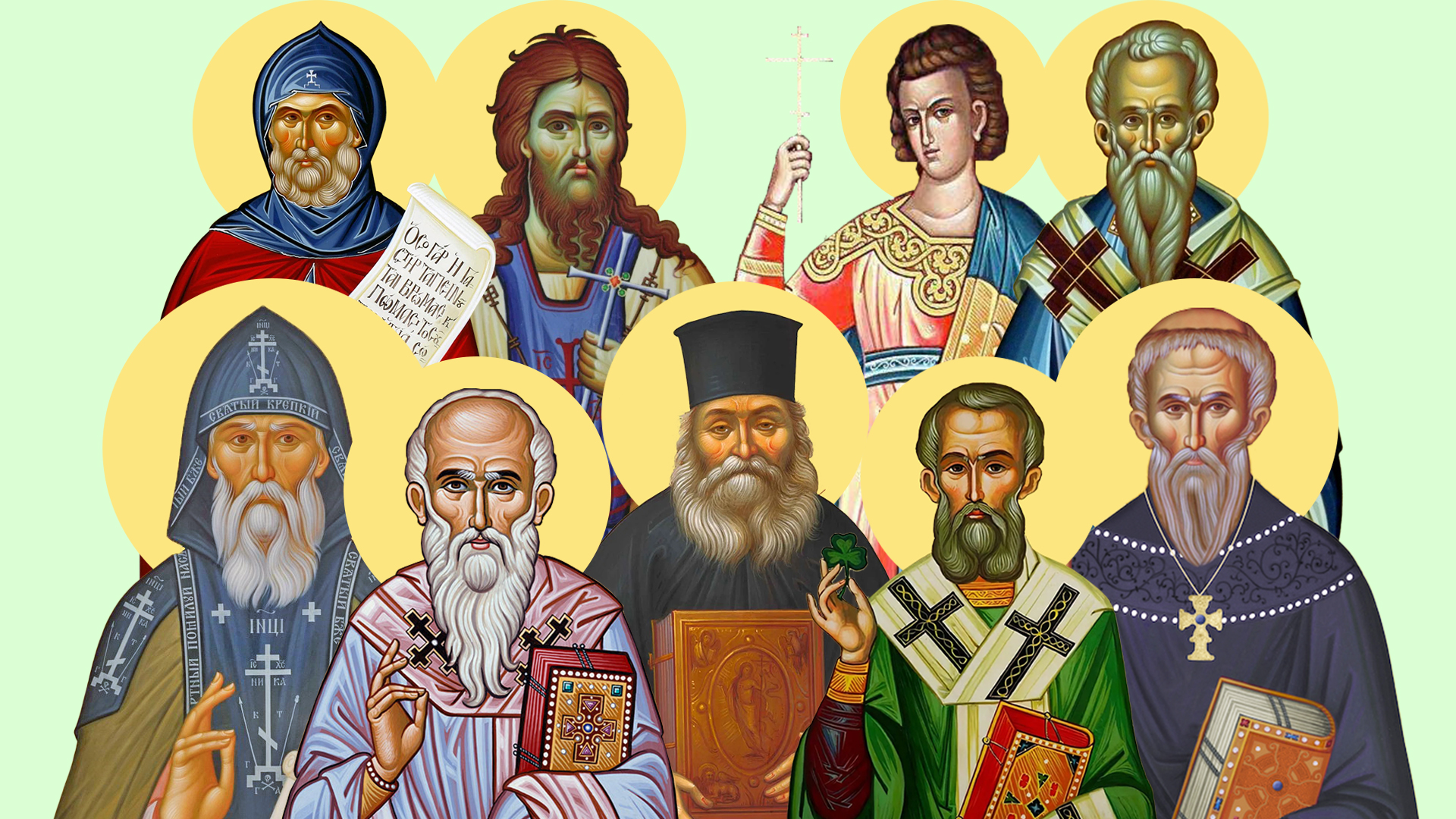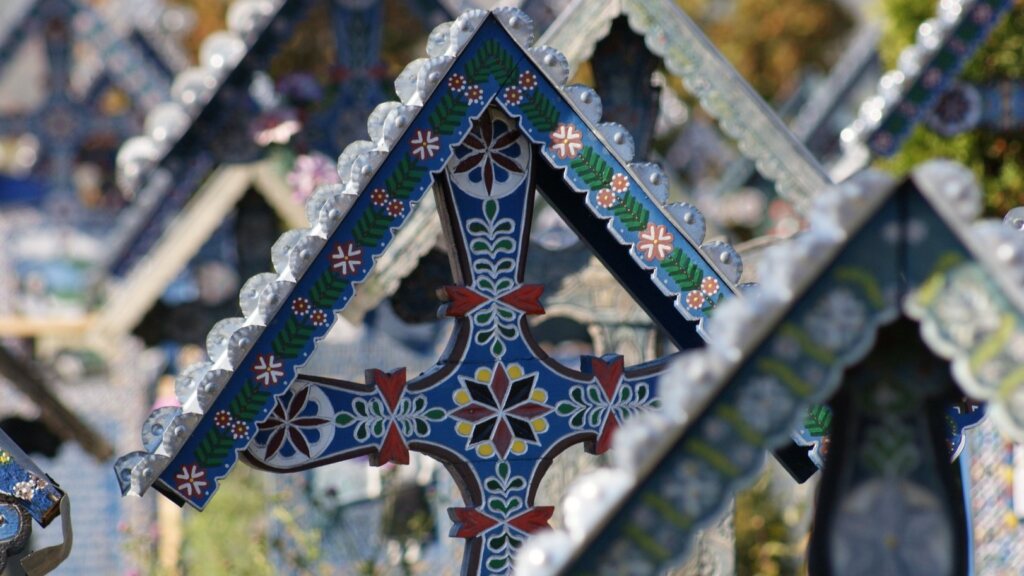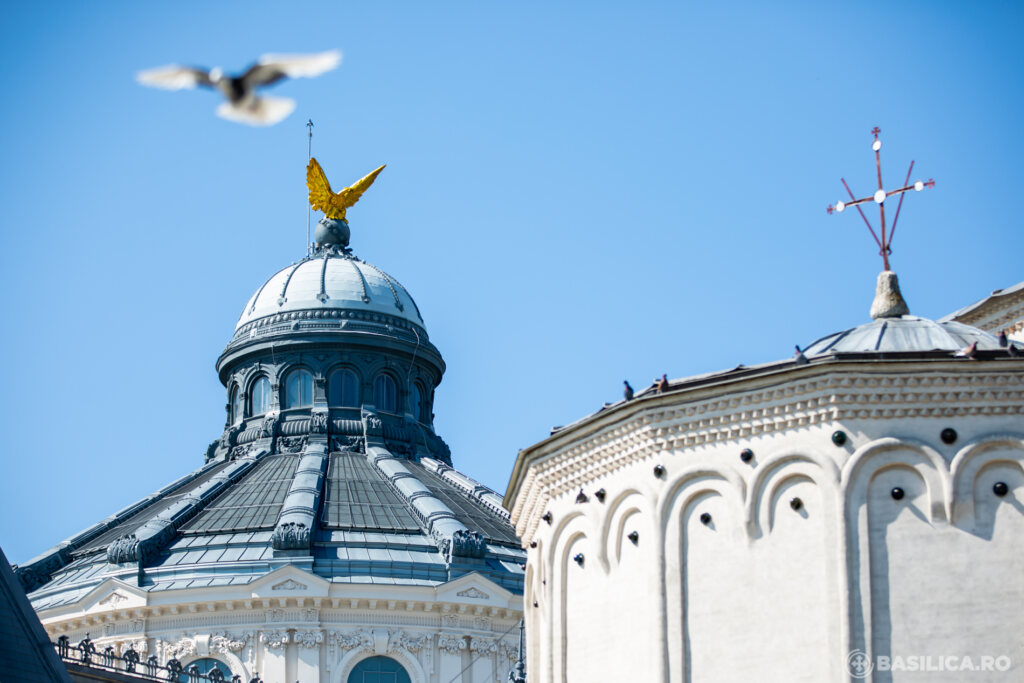We continue to feature each month’s holy healers, with nine saints celebrated in March. The lives of some of them are less known to believers in Romania, so this month is a good opportunity to learn about saints who enjoy special reverence in other countries such as the United Kingdom or Greece.
Saint David of Wales – March 1
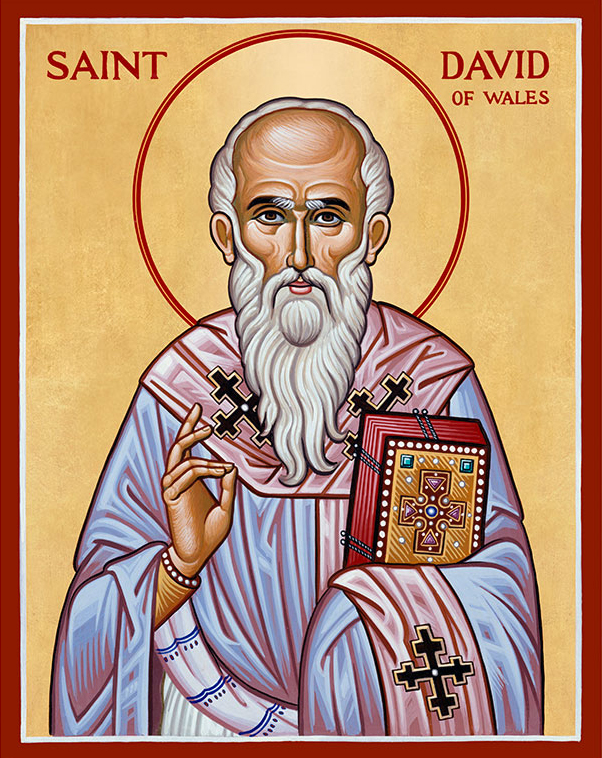
Saint David lived in the second half of the 6th century and is one of the most beloved saints in the British Isles.
He was the disciple of Saint Illtud, the first to organize monastic life in the region. Later, St. David founded a monastery in his native land, known for its austere asceticism and inspired by the desert fathers. The settlement in which it was located, Menevia, later took the saint’s name (St Davids).
During his lifetime, he was known as a miracle worker. He cured his spiritual father of blindness by marking the Holy Cross above his eyes. He also healed a heathen leader of a fever and resurrected his flocks.
He became the patron saint of Wales after more than 60 churches in this territory were dedicated to him in the 12th century.
Saint Nicholas Planas – March 2
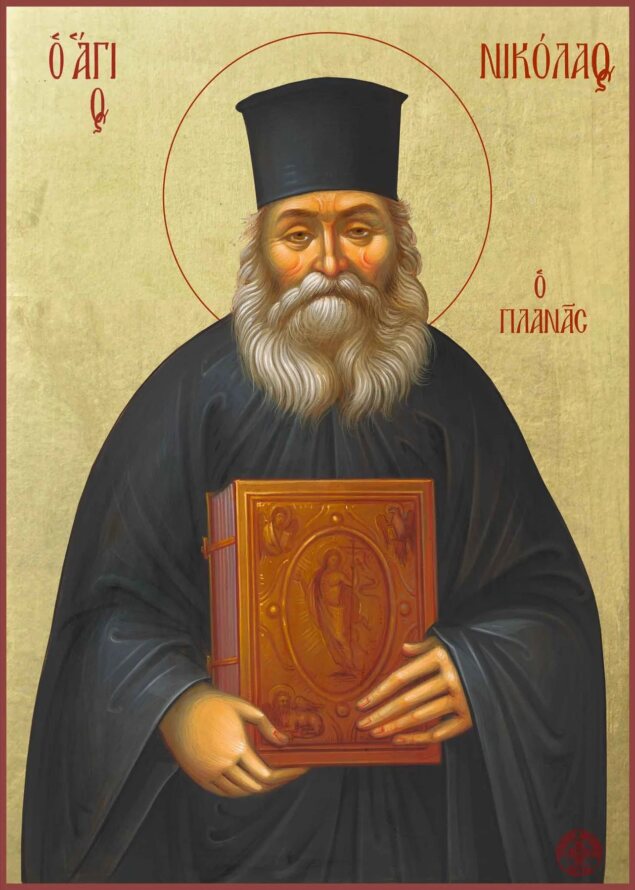
Saint Nicholas Planas was a priest who lived in Greece between 1851-1932. The main characteristic of his life was simplicity. He was not a theologian; he was not known for special ascetic efforts; he did not build churches or monasteries, and he did not die as a martyr. Instead, he did what is within the reach of every Christian. He obeyed and fulfilled the Lord’s will and shepherded his believers with much love and gentleness, healing them spiritually.
For 50 years, “Papa Nicholas”, as he was called, celebrated the Divine Liturgy daily, sometimes in a miraculous way, alongside saints such as St. Phocas, bishop of Sinope.
Saint Nicholas also had a special connection with Saint Panteleimon. He came to a vigil in his honour, although he was very ill, and received a medicine from the hand of St. Panteleimon himself that healed him immediately.
In his life, it is noted that he offered Holy Communion to the lepers or walked many kilometres to reach the sick.
There is also the testimony of a Greek doctor, Kyprianos Christodoulidis. He remembers that when his mother was ten years old and fell ill due to the typhoid fever epidemic in Athens (1928-1930), Saint Nicholas Planas appeared to her, made the sign of the cross, and said, “I have come to make you good.”
Saint Alexander of Pydna – March 14

Saint Alexander lived in the 3rd century, during the reign of the pagan emperor Maximian Galerius. According to tradition, the saint was a relative of the Holy Great Martyr Demetrius, the myrrh-gusher.
Some hagiographic writings present him as the ruler of the ancient region of Macedonia, located in the present-day territory of Greece, where the ancient city of Pydna was also located. Currently, an archaeological site preserves the place of his martyrdom and the ruins of ancient churches under the jurisdiction of the Metropolis of Kitros, Katerini, and Platamonas.
The writings also mention that St. Alexander persuaded people to stop sacrificing to idols and, in the name of Christ, healed diseases and cast out demons.
The preaching of Christianity brought him before the pagan emperor Maximian, who ordered his beheading. The Christians took his body and buried it, his grave becoming a source of physical and spiritual healing.
His relics arrived in Constantinople during the reign of Saint Constantine the Great. Later, in the 10th century, at the request of Saint Athanasius the Athonite, Emperor Nikephoros Phocas donated the head of Saint Alexander the Great to the Lavra of Mount Athos, where it is still kept today.
Saint Christodoulos of Patmos – March 16
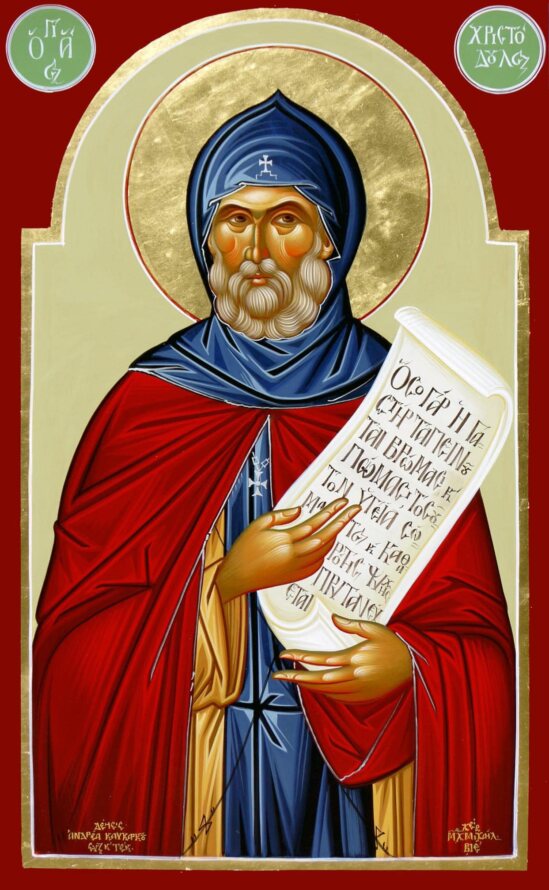
Saint Christodoulos was born in 1020 in Nicaea, Asia Minor, into a pious family. John, by his lay name, was tonsured a monk in a monastery on Mount Olympus. After several peregrinations in Asia Minor and the Greek islands, he settled on the island of Patmos, where he built the monastery dedicated to Saint John the Theologian.
Due to Muslim attacks, he was forced to go to the island of Evia, where he reposed in 1101.
In a work about Saint Christodoulos, Metropolitan John of Rhodes mentions that the locals of Evia considered him “the physician who heals every disease.” The work also relates an episode in which a monk with a darkened mind wanted to leave the monastery. St. Christodoulos read him the prayer for the sick, and immediately, his condition improved.
His disciples brought his holy relics back to the monastery he founded in Patmos, although the locals of Evia objected.
The relics are now in a monastery chapel and are “a fountain of miracles, and all who approach them with faith feel a pleasant fragrance, and also by their mere touch they are sanctified and freed from all physical harm” (Metropolitan John of Rhodes).
The discovery of the holy relics of the Venerable Christodoulos is celebrated on October 21.
Saint Patrick, Enlightener of Ireland – March 17
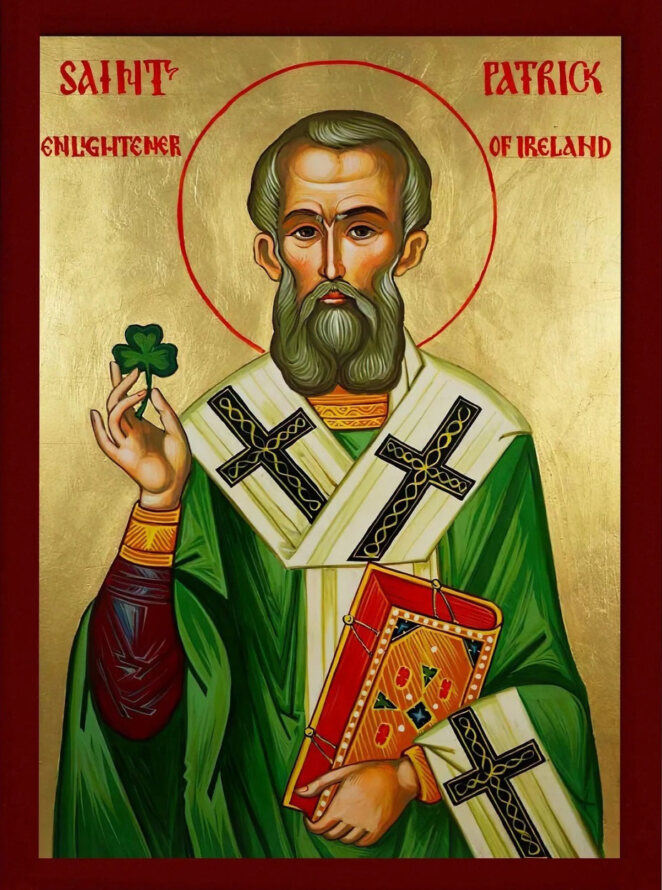
St. Patrick lived in the late 4th—early 5th century. He was originally from Wales but was kidnapped by pirates and taken to Ireland. After six years of slavery, the saint fled to Gallia (today’s France), where he entered monasticism.
He later returned to Ireland, where he was ordained a bishop. Although he was not the first Christian missionary on Irish territory, the saint had the most tremendous success preaching the Gospel, thus becoming the “enlightener of Ireland”.
In his autobiographical book Confessions, the saint mentions that he performed “miracles among the barbarian peoples” and resurrected people “who had been buried for many years.”
In other writings about his life, healings of the blind, deaf, and lepers are mentioned in the name of the Holy Trinity. Several sources indicate that St. Patrick resurrected over 30 people.
Saint Alexis the Man of God – March 17
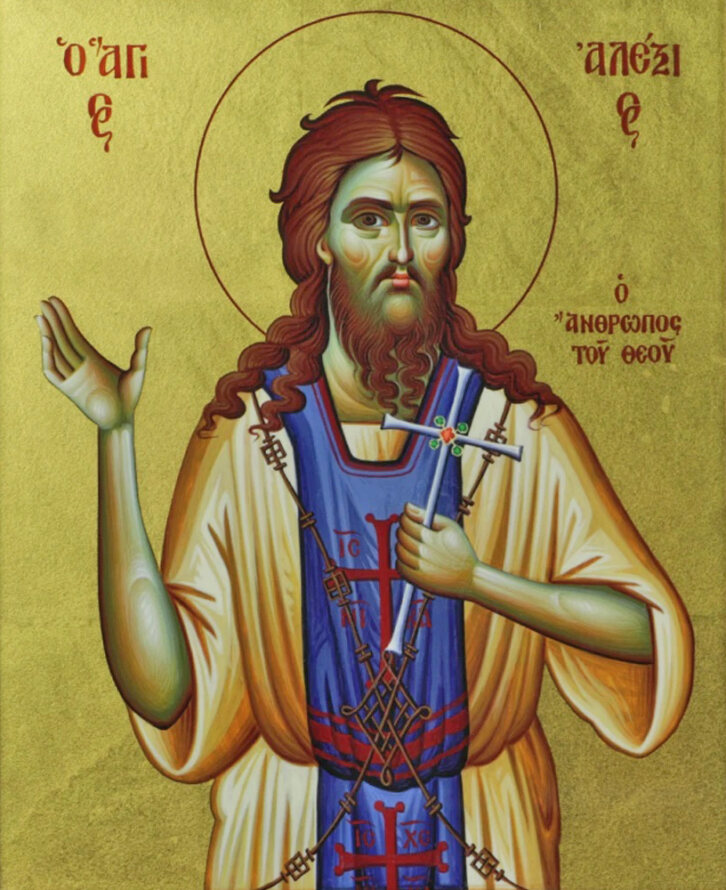
Saint Alexis was born in Rome at the end of the 5th century in a noble and faithful family. Wanting to devote his life to Christ, he left his parents and bride and fled on the first ship, reaching the city of Edessa in Mesopotamia (the territory of Turkey today).
He spent the next 17 years near a church dedicated to the Mother of God, living on people’s mercy. Following a divine revelation, the people were informed that the poor man in the churchyard was actually a “man of God.”
Saint Alexius fled from their praise and embarked on a journey to Tarsus, the city of Saint Paul the Apostle. But God’s plan led him to his hometown.
When he returned home, he was not recognized by anyone. He decided to live as a beggar in a shelter at the gate of his parents’ house.
After his repose in the Lord, his humble life was divinely revealed to the emperor and the pope. They took his body with honour to a church in the centre of Rome. Myrrh began to flow from his holy relics, healing the sick.
His holy head is kept in the Lavra Monastery in Peloponnese (Greece).
Saint Cuthbert – March 20
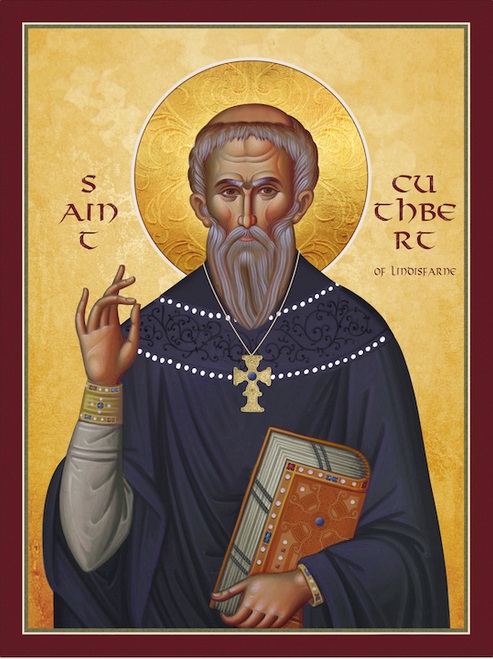
Saint Cuthbert lived in the 7th century in what is now the United Kingdom. He is known for founding and leading several monasteries and carrying out rich missionary activities in regions inhabited by pagans. He was a bishop loved by the people because of his teachings and the gift of healing.
About the year 700, at the request of a bishop and monks of Lindisfarne, an anonymous author wrote the life of Saint Cuthbert, which includes several healings.
The saint healed the wife of a nobleman with water blessed by him. An abbot of the Mailros monastery tells how the saint cured a girl suffering from a severe headache for many years by anointing her with the oil he had blessed. He also healed a disabled young man from a distance, feeling the power of his faith.
The same writing mentions “that in many places the sick and demon-possessed men acknowledged that the demons had left them at his coming, often even before his arrival, and they never returned; others were healed by his presence and with a single word.”
Saint Seraphim of Vyritsa – March 21

Saint Seraphim (1866 – 1949) had a vocation to monasticism since he was a child but took monastic vows only at 55.
He became a millionaire young, married, and had children, but he never strayed from God. He used his wealth to feed the poor, help monasteries with constant donations, and build hospitals for the sick.
After the Bolshevik Revolution of 1917, he and his wife decided to enter monasticism, although they had the financial comfort to go to any country.
After this moment, he began his work as a clergyman, bringing spiritual and physical comfort to many people, especially since the world was passing through difficult periods of political and economic instability and, in the end, war.
After the retreat to Vyritsa (60 km from Saint Petersburg), the saint himself suffered greatly from rheumatism and neuralgia.
Sometimes, he could not move independently due to illness, but this did not prevent him from praying for all those in pain for a thousand days on a stone, like his patron saint, St. Seraphim of Sarov.
There are testimonies of healing done even after his death. When the saint was in the coffin, a mother brought her daughter blind from birth, who, as soon as she kissed her father’s hand, began to see. Many such miracles continue to happen at his tomb in Vyritsa.
Saint Hypatius of Gangra – March 31
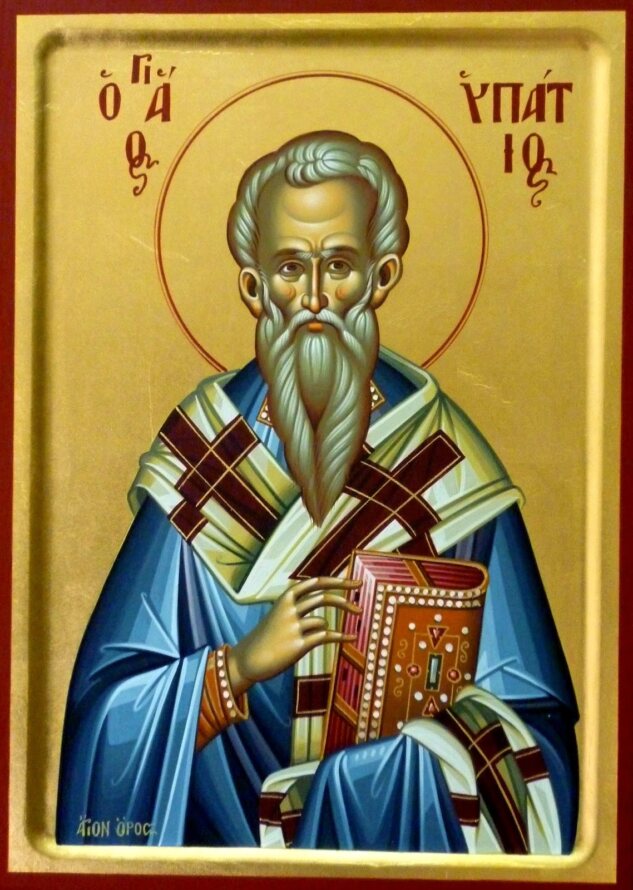
He lived in Asia Minor at the end of the 2nd—beginning of the 3rd century. He was bishop of the city of Gangra and participated in the First Ecumenical Council of Nicaea (325), which fought against the heresy of Arius.
Even during his lifetime, he was known as a miracle worker. The saint turned bitter waters into sweet and drinkable waters, caused a healing spring to gush forth with warm water, and killed a dragon hidden in Constantius II’s treasuries, the son of St. Constantine the Great.
On his way back from Constantinople to Gangra, he was attacked and killed by an Arian woman who crushed his head with a stone.
His relics became a source of miracles, such as casting out demons and healing the sick.
View this post on Instagram
